Surgical Periodontics – Louisville, KY
For Patients with Complex Periodontal Needs
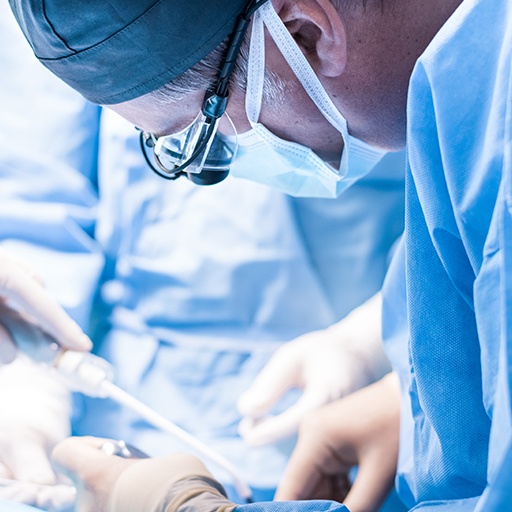
Some patients have relatively simple periodontal issues that can be dealt with through nonsurgical means. For those with more extensive needs, Dr. Cordini can offer multiple forms of periodontal surgery, all performed with a gentle touch and an excellent chairside manner. We’ll always aim to complete your treatments in as few visits as possible so that you won’t have to wait as long to start taking advantage of your restored smile. Get in touch with us today to learn more about our options for surgical periodontics in Louisivlle, KY.
Why Choose Cordini Periodontics & Implants for Surgical Periodontics?
- One-Stop Shop for Periodontal Services
- Advanced Solutions for Gum Disease
- Kind Dentist with Gentle Chairside Manner
Crown Lengthening
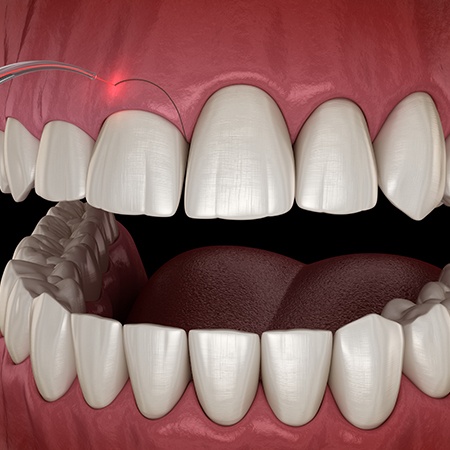
Have you been told that you can’t get a dental crown because your gums are in the way? The solution is to remove the tissue that isn’t needed to reveal more of the healthy tooth structure underneath. This process, called crown lengthening, can be completed in less than one hour. Note that this treatment might also involve removing small amounts of bone tissue. Don’t worry; only the tissue in the immediate area next to the tooth in question will be treated.
Bone Grafting
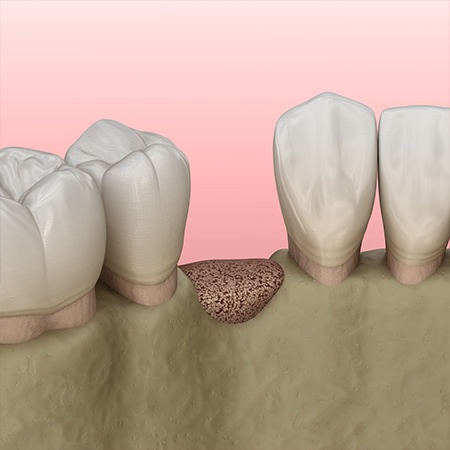
You may be told that you need bone grafts before you can receive dental implants. To put it simply, tooth loss ultimately causes the jawbone to break down, and we need to rebuild it before the implant surgery. To do so, we can take bone from elsewhere in your body (such as the hip or a healthier part of the jaw) and transplant it to the area in question. Over time, the grafted material will become integrated with the jaw, which will start producing new bone tissue of its own.
Who Needs Bone Grafting?

Basically, bone grafting is necessary for patients whose jawbone is not strong enough or large enough to support dental implants. You might need this procedure if:
- It has been a while since you lost your natural teeth. After the natural teeth are extracted, their roots are no longer present to stimulate the jawbone. As a result, the body begins to recycle the bone, and it gradually loses its strength and shape.
- Your jawbone is naturally small. Due to genetics, some people have a naturally small jawbone.
- You were injured. Certain types of facial injuries may adversely affect the ability of the jaw to support dental implants.
- You are older. Research indicates that the jawbone tends to shrink naturally over time.
How Does Bone Grafting Work?
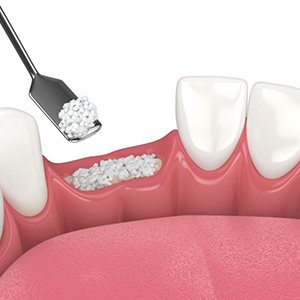
The details of the bone grafting surgery vary from case to case. We may take the grafted bone from another part of your body, but it is also possible to use artificial material or bone from another subject (such as an animal).
During the surgery, we create an incision in the gums and place the graft at the location where your jawbone needs to be fortified. Then, we close the incision. Over the next several months, the graft should integrate with your natural bone structure and enable you to support dental implants.
In some cases, we are able to place dental implants at the same time that we perform a bone graft. In other instances, there is a waiting period of a few months between the two procedures.
Benefits of Bone Grafting

It might seem like an inconvenience if you are told that you need a bone graft before you get dental implants; this procedure could significantly extend your treatment timeline. However, the benefits of bone grafting far outweigh the disadvantages.
- A bone graft can give your new prosthetic teeth the foundation they need to thrive for many years to come. (Without grafting, you might be ineligible for implants, which could mean that you must get dentures or another inferior form of tooth replacement.)
- When it is performed by a qualified surgical team, bone grafting is generally very successful and comes with minimal risks.
- Bone grafting supports the health of your facial bones and, along with dental implants, can help you to maintain your natural face shape.
- Like most of our procedures, bone grafting is customizable. We keep it as conservative as possible for each patient!
Gum/Soft Tissue Grafting
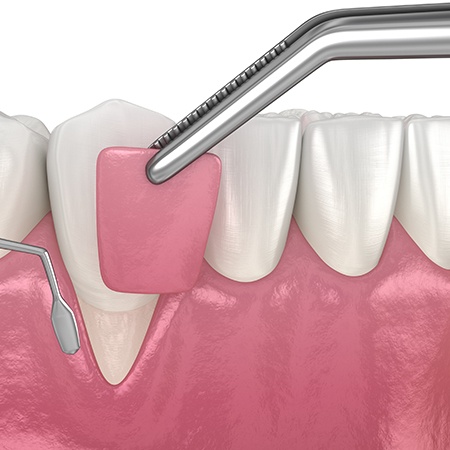
As your gums start to recede due to gum disease, your teeth will start to look longer than normal. You may also notice them becoming more sensitive as the roots are exposed. By taking a small amount of tissue from the roof of your mouth and attaching it to areas where recession has occurred, we can protect your teeth, restore balance to your smile, and make it easier for you to enjoy your favorite hot and cold foods again.
Sinus Lift
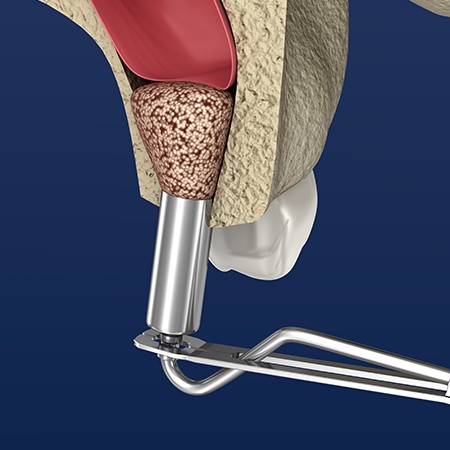
Sinus lifts can be thought of as a special kind of bone graft. It’s another way to add height and density to a jawbone that has started to degrade after tooth loss. However, it also serves the purpose of moving the sinus cavity up and away from the area where the dental implant needs to be inserted. This procedure may be recommended if you are missing the teeth near the back of your upper jaw.
Who Needs a Sinus Lift?

A sinus lift is necessary when the upper jaw is too thin. If dental implants were inserted, they could penetrate the sinus membrane and cause complications.
There are a number of reasons why your upper jaw may be too thin to support dental implants:
- You lost your teeth some time ago. After the natural teeth are removed, the jawbone gradually loses its strength and density.
- Due to genetics, your jawbone may be naturally thin, or you may have a naturally large sinus.
- Other reasons. Advanced gum disease, injuries, and other factors can lead to an upper jawbone that cannot support dental implants.
How Does a Sinus Lift Work?
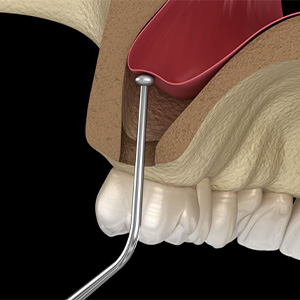
One of the first things we do during a sinus lift procedure is tend to patient comfort. In addition to numbing your mouth, we may also administer sedation. You should feel little to nothing while we are working.
To start the procedure, we make incisions in the gums so we can access the jawbone. Then, we make space in the bone so we can insert an instrument that pushes the sinus membrane upward. To keep the sinus membrane in its new place, we place a bone graft beneath it. The bone may be from a donor or an artificial source. We finish by closing the incision.
The soft tissue at the site of a sinus lift tends to heal fairly quickly. However, integration of the bone graft can take 4 – 9 months. Thereafter, you may be eligible to receive dental implants.
Aftercare Tips for a Sinus Lift

Here are some tips to facilitate a smooth recovery after your sinus lift:
- Take all recommended medications, including antibiotics, as prescribed by our team.
- Do not vigorously blow your nose or sneeze; you might accidentally displace the bone graft.
- Do not smoke; it can slow down your body’s healing process and increase the risk of infection.
- Do not drink through a straw; the suction could dislodge the blood clots at your surgical sites.
- Get plenty of rest so your body can focus on healing.
- Eat a soft diet to avoid irritating your healing tissues.
- Call us if you have any questions or concerns during your recovery period. We are always ready to help.
- Attend all recommended follow-up appointments with our team.
Pocket Reduction Surgery
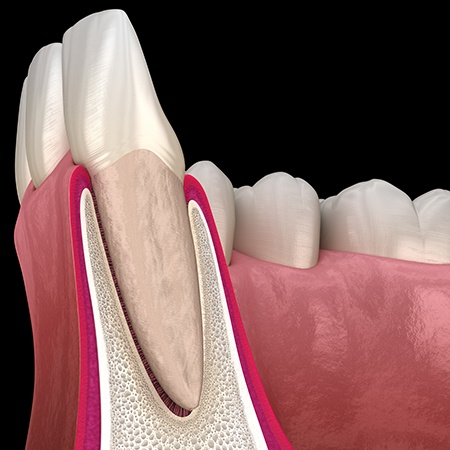
Normally, the pockets between your teeth and gum tissue should only be about 2 to 3 millimeters deep. As bacteria destroy the nearby tissue, the pockets will grow bigger, creating even more space for harmful organisms to hide. If your pocket is 5 millimeters deep or more, pocket reduction surgery may be required. The process involves removing the disease-causing bacteria while also encouraging the surrounding tissue to heal itself.
Wisdom Tooth Extractions

Wisdom teeth usually try to erupt around the late teens and early twenties. Unfortunately, the lack of room means that they more often than not get trapped, leading to pain, overcrowding, and even infections in the mouth. If there are any warning signs that wisdom teeth are likely to cause problems, we can remove them with a minimal amount of discomfort thanks to our advanced technology and modern periodontal techniques. Get in touch with us if a young adult in your life is due to receive their wisdom teeth soon.


